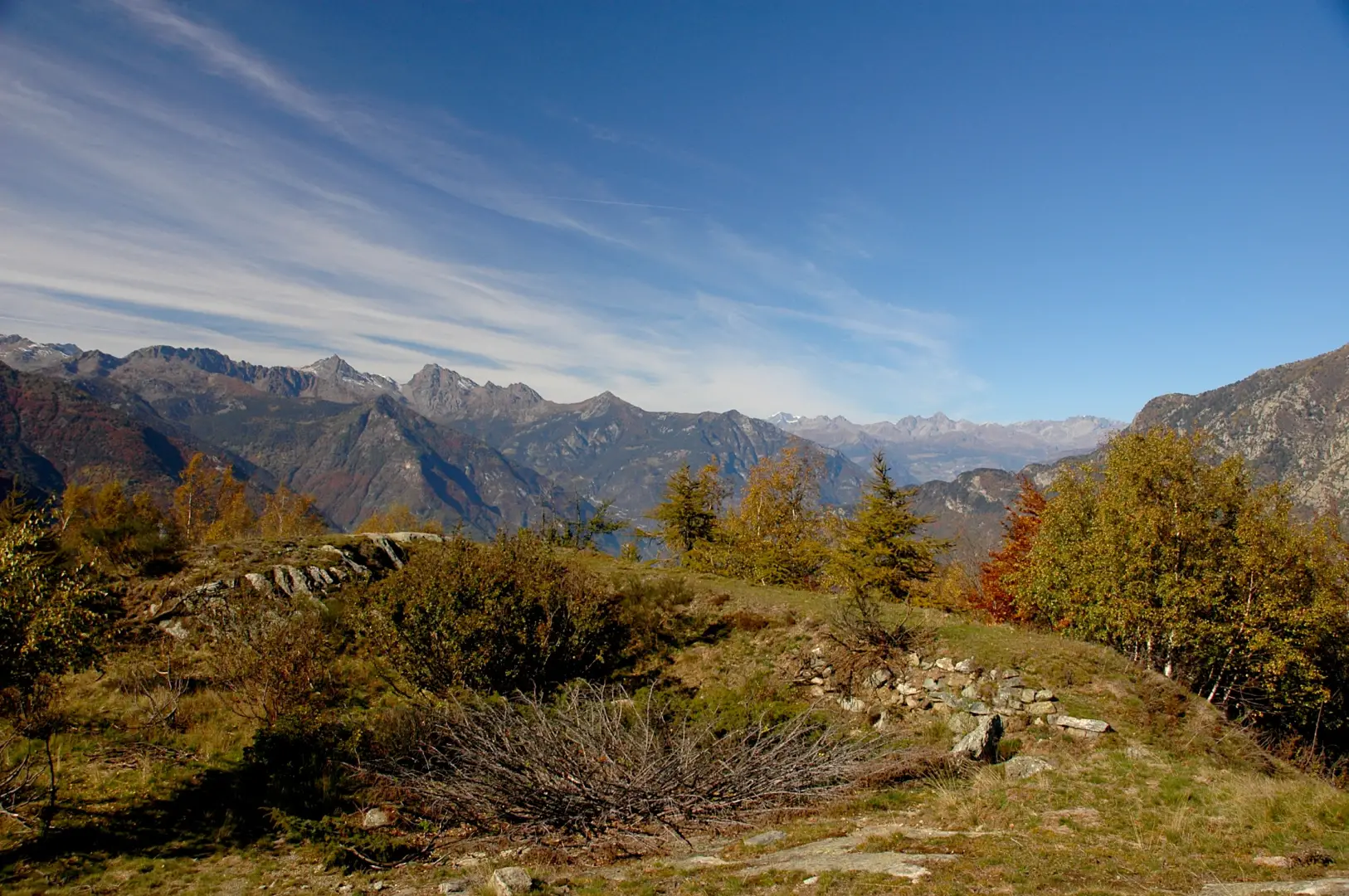Tête de Cou, from the Machaby car park

Access
Leaving the motorway at the Verrès exit, turn right onto the main road in the direction of Turin. Pass the village of Verrès and, after 4.5 kilometres, you will reach the Arnad roundabout. Take the second exit and continue towards the town unable to parse following the signs for the Machaby sanctuary. Go up the municipal road for about 2 kilometres, skirting the complex of the Romanesque church of San Martino and passing near the Valleise Castle until you come to the fork for the Machaby parking area: go straight on for about 700 metres until you come to a large car park where you can leave your car. In the area there is a panel with the indications of the municipal path network.
How to get there with GMaps
How to get there with Apple Maps
Introduction
Description
You descend the road until you come to a signpost indicating the path (4): here, turn left and take the wide paved mule track that leads to Machaby. You will soon come across a "tzapelet" (an old oratory with frescoes used in processions) and continue past a stream on a wide wooden bridge. Continue along the little paved road entering the chestnut forest (Castanea sativa), after a turn to the right, continue for a few minutes until reaching the Machaby Sanctuary (691m, 0h15'): the edifice, erected in the 15th century, is dedicated to Our Lady of the Snows with an annual festival every 5th August.
Continue along the little road and in a few minutes you will reach, near another oratory, the locality known as "Pradouegne" (wide plateau under age-old chestnut trees) and the village of Machaby: a short visit to the village is recommended to observe the characteristic Dzerby.
Returning to Pradouegne, you can take advantage of a wine and food break at Cesarino Bonin's "Lo Dzerby" farmhouse and then continue the route towards the remains of Lieutenant Lucini's fortification (717m, 0h25'). Shortly after the shelter, you come to the fork to descend towards Bard: this path is currently closed by an ordinance of the mayor of Arnad due to landslide risk. We proceed along the easy road that, with a series of hairpin bends, enters the forest again; every now and then there are panoramic views, especially of the not too distant Paretone, the cradle of free-climbing in Valle d'Aosta. Slowly you reach a small clearing where there are the remains of other military fortifications on a plateau where the village of Arbeadze once stood (824m, 0h50'). Here we leave the small road and begin to proceed along the beautiful paved mule track. Along the ascent, we come across a couple of renovated cottages and then enter the chestnut forest again. After a few hairpin bends, we come to a fork in the road (899m, 1h05'): a faint trail branches off to the right of a hairpin bend to reach the base of the famous Pilastro Lomasti. Obviously, this deviation is overlooked and we proceed further into the forest where the mule track makes an endless series of turns, always supported by impeccable dry stone walls. After a thousand metres, the chestnut tree gives way to beech (Fagus sylvatica) and birch and, shortly afterwards, the mule track gives way to a grassy road. You slowly approach the pass and the vegetation thins out until you reach the wide clearing before the village of La Cou. We pass a small wooden fountain and finally reach La Cou (1379m, 2h 20'). At the height of a renovated house, turn right and follow a small path that, with a series of ups and downs, finally reaches our destination: the Tête de Cou (1410m, 2h30')
From the summit you can enjoy interesting panoramic views of the upper Canavese, the lower valley and the entire mountain range from Bec Renon to the distant Grand Combin.
The return trip is by the same route as the outward journey (1h30').
The sanctuary is not always open to the public due to the numerous thefts that have occurred over the years and can be visited during religious rites (the patron saint's day with a procession and mass on 5 August). Inside, the walls and vaults are frescoed and covered with crutches and ex-voto sticks. Outside, one can walk a Rosary following the paintings in the stone niches.
Punti di interesse
Collections
- escursioni con partenza dal parcheggio di Machaby - sulla mappa
- escursioni sui 1000 della Valle d'Aosta - sulla mappa
- escursioni a Arnad - sulla mappa
- escursioni in bassa Valle d'Aosta - sulla mappa
- escursioni in Valle d'Aosta - sulla mappa